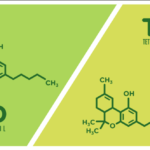A greenhouse is vulnerable to insect attacks if you don’t clean it regularly. But since you may not have time to clean it daily, you should at least try to sanitize it once a month to keep the plants safe and free from pests and bacteria.
Sanitizing the greenhouse
It doesn’t matter whether you are a home grower or a commercial grower. If you have a greenhouse, you should clean it to protect the plants. Over the course of the growing season, there are infectious microbes that also grow along with the plants. In fact, algae can develop quickly on moist surfaces and on the walls of wooden greenhouses, leading to the growth of shore flies and fungus gnats. Preventing these pests from growing should be your primary goal. You can eradicate these pests from your greenhouse using the following sanitizing techniques:
1) Alcohol
Alcohol can kill microbes if they meet the liquid, but it is volatile a solvent. You may need to apply alcohol in the greenhouse frequently because the results are short-lived. Alternatively, you can sterilize your gardening tools like propagation knives or shears with alcohol to keep insects away from the soil.
2) Bleach
Bleach is the cheapest and most widely used disinfectant to sanitize a greenhouse. But since you need to dilute it using water, it may lose its efficacy after a couple of hours. Instead of using it directly inside the greenhouse, you should take one portion of bleach and mix it with nine parts of water. Also, don’t forget to wash the soil or organic matter from a pot before disinfecting it with the bleach solution.
3) Hydrogen oxide
Hydrogen oxide is a highly effective disinfectant that can kill different types of bacteria. You can apply it on the pots, on the ground, and the walls of the greenhouse to kill the insects and prevent further growth.
4) Quaternary Ammonium Chloride Salt
Unlike bleach or alcohol, Quaternary Ammonium Chloride Salt does not lose its effectiveness. You can spray the solution on flats, pots, etc. but make sure they are free from any organic material or planting medium.
Sanitizing a greenhouse involves a two-part process: the first part is to clean and remove the items from the pots and flats, and second is the sanitizing process where you can use the above-mentioned solutions to prevent insect growth. Cleaning the greenhouse means eliminating some of the unwanted plant materials like weeds. Other items that you need to clean include spilled soil, plant debris, and anything that clutters the greenhouse.
Gardeners often use a vacuum cleaner to suck the dust and dirt before starting the sanitizing process. This cleans broken pottery shards, wayward dust, and small twigs from plants. You can follow up this cleaning process by power washing the fertilizer residues, grime, and algae that may have grown in and around the pots. While all this proves time-consuming, it’s better to act promptly instead of waiting for pests to thrive when it’s already the growing season.








